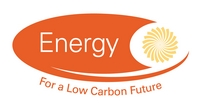Projects
Projects: Projects for Investigator |
||
| Reference Number | EP/X014673/1 | |
| Title | Shining Light on Metal Halide Perovskite Stability with Nanoscale Optical Characterization | |
| Status | Started | |
| Energy Categories | Renewable Energy Sources(Solar Energy, Photovoltaics) 50%; Not Energy Related 50%; |
|
| Research Types | Basic and strategic applied research 100% | |
| Science and Technology Fields | PHYSICAL SCIENCES AND MATHEMATICS (Physics) 75%; PHYSICAL SCIENCES AND MATHEMATICS (Metallurgy and Materials) 25%; |
|
| UKERC Cross Cutting Characterisation | Not Cross-cutting 100% | |
| Principal Investigator |
Dr R Milot Physics University of Warwick |
|
| Award Type | Standard | |
| Funding Source | EPSRC | |
| Start Date | 01 February 2023 | |
| End Date | 31 January 2028 | |
| Duration | 60 months | |
| Total Grant Value | £2,131,559 | |
| Industrial Sectors | ||
| Region | West Midlands | |
| Programme | Frontier Grants - Starter | |
| Investigators | Principal Investigator | Dr R Milot , Physics, University of Warwick (100.000%) |
| Web Site | ||
| Objectives | ||
| Abstract | Mitigating the detrimental effects of climate change will require technological advances in renewable energy. In the last decade, hybrid metal halide perovskite thin films have shown increasing success as active layers in solar cells, demonstrating power conversion efficiencies rivaling those of silicon. Despite these successes, issues with stability and concerns about toxicity have kept these materials from widespread commercialization. At the center of both issues is the polycrystalline microstructure inherent to these films, which introduces heterogeneity in optoelectronic properties and energy landscape and can limit charge transport and efficiency. However, identifying routes for improvement is difficult because measurements of bulk optoelectronic properties cannot adequately probe this heterogeneity. A need therefore exists for optoelectronic studies on the nanoscale to fully understand the relationship between microstructure, stability, and charge transport.This project will address these issues by pioneering the combined use of THz and photoluminescence (PL) scattering near-field microscopy (SNOM) to map static and dynamic optoelectronic properties at the nanoscale. This project will specifically focus on mixed-halide and mixed lead-tin materials for the use in tandem solar cells as they are central to both the stability concerns and the commercial efforts of the field. Through comparison with traditional microscopy and ultrafast spectroscopy measurements, THz/PL-SNOM measurements will unravel the mechanisms whereby both intrinsic and extrinsic factors affect optoelectronic performance. By analyzing methods employed to improve stability including passivation and A-site cation mixing, this project will provide a roadmap for the materials engineering of stable and efficient perovskite thin films. | |
| Data | No related datasets |
|
| Projects | No related projects |
|
| Publications | No related publications |
|
| Added to Database | 15/02/23 | |



